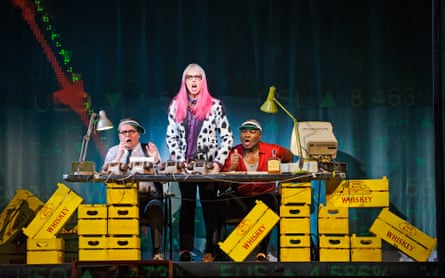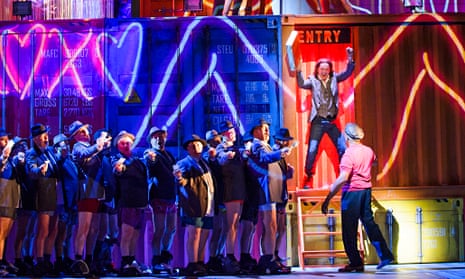I doubt that even Kurt Weill and Bertolt Brecht’s biggest fans would rate the Rise and Fall of the City of Mahagonny among their greatest achievements. Premiered in 1930, it was their first large-scale collaboration, and the nearest thing to a conventional opera the pair ever conceived.
It’s also the only one of their genre-busting theatre pieces that requires the full resources of an opera house, but that doesn’t mean that companies have fallen over each other to stage it: John Fulljames’ new production for the Royal Opera is the first in a major house in this country for 20 years. The last, at English National Opera in 1995, vanished without trace and was never revived – and I can’t imagine this one will get many outings after its initial run either.
That’s partly the fault of the work, which mixes a few good numbers with a lot of music that is unmemorably routine and a dramatic structure that is never taut, and partly that of the performance – conductor Mark Wigglesworth takes everything very seriously and rather too slowly. But it has to be down to the staging as well, which needs stiletto-like precision to make the satire as bitingly accurate and uncomfortable as possible. There are very few laughs here, even sardonic ones, and turning video cameras on the audience in the final scene, so that everyone is made complicit in the execution that ends the opera, is no real solution.

Es Devlin’s designs are built around shipping containers, which for an opera that deals with trafficking of money, goods and flesh, is reasonable enough. In the second half, a pyramid of containers provides the backdrop, on to which multilingual signs and slogans are projected; this monument to capitalist greed is part Vegas, part Sun City, but really the sleazy end of every big city in the world, a place where everything can be bought for a price, and where having no money is a worse crime than murder. Fulljames adds a few extra tweaks – there’s a brief video discursion on oil consumption and climate change at one point – but by sticking to grimy naturalism, he never gets the tone right; it’s surely a work that needs something more brittle and cartoonish than this.
That lack of definition extends to the performances. Only Christine Rice as Jenny, the tart with at least a semblance of a heart is totally convincing; Begbick, the madame who founds the city and sets its rules, is sung rather pallidly by Anne Sofie von Otter, and Kurt Streit is the monochrome Jimmy, the city’s ultimate victim. This isn’t an opera made for great singing, and it doesn’t get much of it here.

Comments (…)
Sign in or create your Guardian account to join the discussion